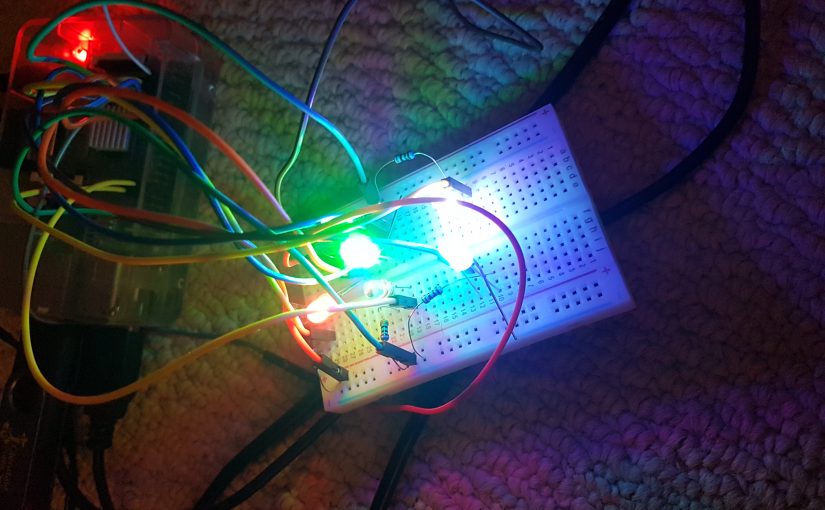When asked to describe a satellite time-lapse, it is extremely likely that one would extrapolate some sort of time-series creation that shows gradual change with the use of natural colour images. It is however in this method of displaying satellite imagery, that a great deal of information is lost. To elaborate, individuals viewing such time-series creations cannot interpret quantifiable descriptors that may aid in conveying a message. Take for example the time-lapse provided below.
For what it is, a simple visual attempt at identifying change, the time-lapse above does an effective job at conveying change. Having said this however it does not provide the viewer with quantifiable observations, like the area developed per year, or even the ratio of land to water, as an example. Such statistics would be extremely useful in not only further illustrating a point, but also further encapsulating a viewer in the creation made. With this being said there are methods in which information can be derived from satellite imagery to provide viewers with a greater level of detail.
Within the realm of remote sensing, or the field in which data are collected without having a physical presence, there are a number of methods that allow individuals to interpret quantifiable data from the images one may capture. The most significant method being, a change detection. As a brief summary of what a change detection is, it is a temporal analysis between two, or more, periods of time, where either multi-spectral, or hyper-spectral images, and subsequent band combinations, are used to identify quantifiable areas of change between temporal foci. A change detection is of significant importance as it imparts the viewer with a definitive measure of change, far from the interpreted observation of change found within a regular timelapse. Taking a step back, one could quite easily identify, and even argue that in order to create a more effective timelapse, one could combine aspects of a change detection, creating an enhanced, and ever effective geo-visualization. Such a creation would bridge the gap between the lay, and the academic.
But such a thought begs the question; how could this be accomplished? Better yet, how could a timelapse, comprised of hundreds of composite spectral images, that displays a quantifiable characteristic, be created in an timely, and effective manor?
Put simply, programming is the answer to such questions.
By creating a number of programs, an effective timelapse can be created that can be an effective evolution, from what was previously used. In an attempt to elaborate such a plan, such an attempt follows three steps:
- Create a program, a web-driver, that downloads an entire dataset, in this case all Landsat 4 – 5, imagery for a specific row, and path, in the absence of an API, or database. For an effective geo-visualization to be created, a great deal of data are needed.
- Instantiate a program, that opens each file, in this case Landsat image, and pulls three bands to be used to create a composite image that will better show a specific type of geographic change..
- Develop a program, that classifies imagery based on a predefined signature class, a file containing information on predetermined training classifications, that will then find, and append, the total area of a classification to a CSV file.
Put simply, the series of programs that will be created will create the intended geo-visualization, as well as do so in an efficient manor.
Attached are two links to a Dropbox folder, both links are direct connections to both programs needed to, download, and compose the images in focus.
Image Downloader:
https://www.dropbox.com/s/63ig83vd30ydk0a/Composite_Composer.py?dl=0
Image Composer:
https://www.dropbox.com/s/63ig83vd30ydk0a/Composite_Composer.py?dl=0
*Note, that in-depth comments have been provided for each stage, within each program. A general idea, as well as flow of each program should be quite easy to interpret.
It should be noted however, in the process of creating such a geo-visualization, a significant error arose. To elaborate, in the process of creating the final program, the GIS software, in this case ArcGIS, through the manipulation of ArcPY, failed on multiple attempts to read a signature file, and create a classification for each image. After much research it was concluded that an internal, however still unresolved issue was the main cause. As such, the final, and most important program could not be created.
The images created, were then edited in Adobe Lightroom, a image manipulation software, to remove any significant errors, and stitched together using Adobe Premiere Pro. Additional peices of information, such as titles, summaries, as well as dates were added within Adobe After Effects. The final geo-visualization can be seen below.
In summary, the Landsat timelapse created is extremely unique, it can safely be argued that there are no other geo-visualization methods like it currently present. In regards to what was attempted to be solved, it however did not accomplish all the tasks set out. From the perspective of the viewer, it is an easier method of data interpretation, however, it still lacks the quantifiable data aspect.
With all of this being said however, it is hoped that in the future, when previously mentioned bugs in software are fixed, another, more successful attempt at this geo-visualization can be made.











































